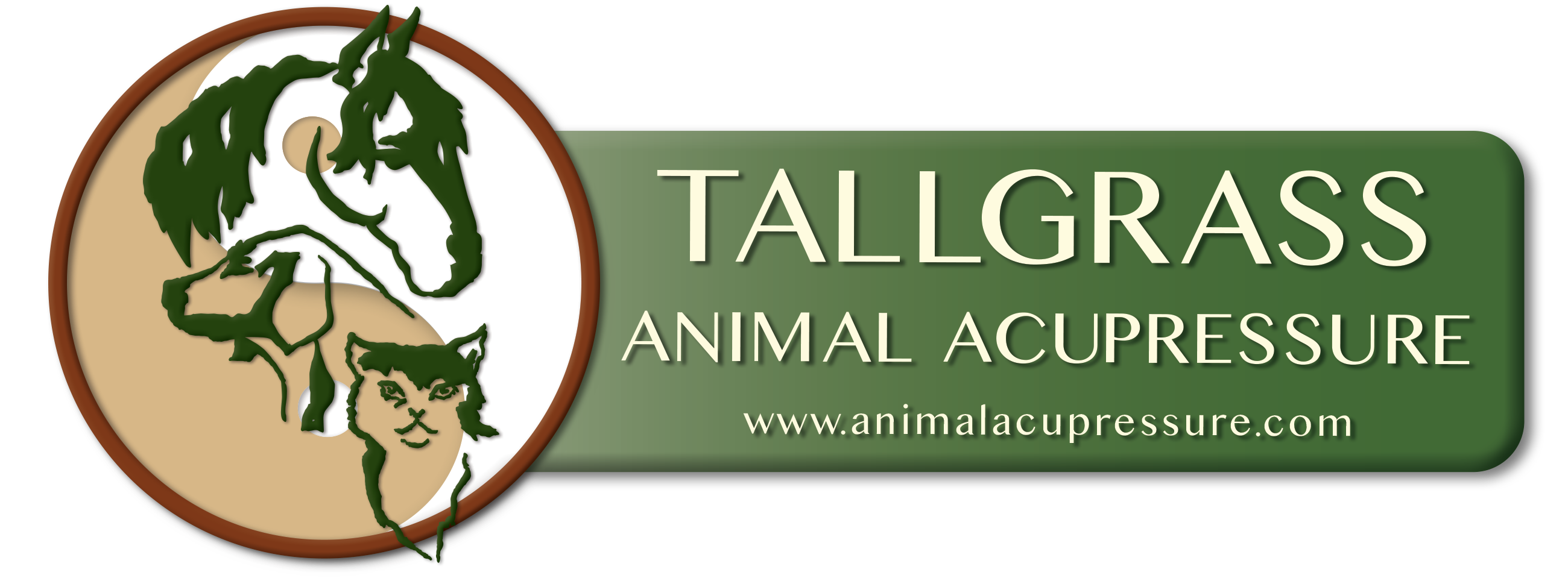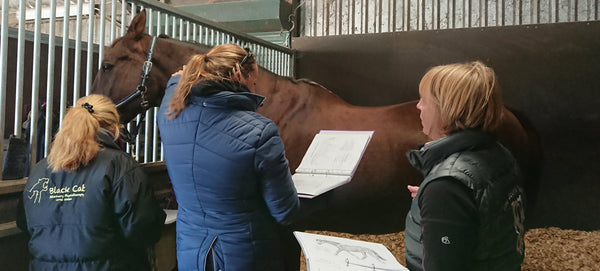Whether your acupressure sessions are on your own animals or on other people’s animals, it is important to keep session notes (case studies). Session notes are where you summarize your findings during the Four Examinations, list which acupoints you selected for point work, notate responses or reactions from the animal and make recommendations for upcoming sessions.
The format may vary depending on your audience. If it is a case study to submit to Tallgrass as part of your coursework then all the information you are taught in the hands on classes should be summarized on a form or in a word document so it is clear to see what you did and why. Note: A form is now provided for you to use when you are taking your Hands on Exams. If your audience is the client or the referring veterinarian you may choose to write session work using different terminology, and you still want to convey your findings in concisely, making sure to not write anything that could be construed as diagnosing or prescribing. Ultimately the case study needs to be useful for you and should become a part of the client file for each animal on which you work.
A “picture is worth a thousand words,” so use your smart phone to capture progress.
First of the Four Examinations is Observation: This is where you summarize all that you observe about the animal from the moment you lay your eyes on them. Ultimately you want to see how they are doing in their environment and how their chi is moving throughout their body.
Things to consider include; how they move, do they stand square, how vital do they seem to be, is there a sparkle in their eye, how does their coat look, basically anything you can see anywhere on their body as you observe them from different angles and as you watch them move and even interact with their person. Pay attention to any areas that your eyes are drawn to or things that catch your attention as you watch them move. Your focus should be on documenting things of note, maybe a dry patchy area of their coat, or discharge from an eye, an unwillingness to stand square, or any area they seem to be licking/chewing/scratching. Remember you are not diagnosing, but rather gathering information and applying your understanding of the Zang-fu meridian/organ systems to find the pattern of disharmony.
Second is the Listening and Smelling part of the Four Examinations. This allows you to gain insight into how the two Upper Burners (Jiaos) are functioning. You listen to their breathing, any vocalizations and then smell along their body noticing any odors from orifices or along meridians or large muscles. Again, jotting down activities / actions of note.
During the History you are able to glean information from the client about the animal, their history, any injuries, surgeries, daily routine, seasonal preferences, diet, supplements, exercise, basically anything you can think to ask to get a picture of the animal’s life, both past and present. You will probably find that as you start asking questions, that more come to mind. Sometimes writing the phrases the client says can be very telling. I once had one say that their horse had “tried it’s heart out” and sure enough Ht 7 was the point this horse responded to the most.
Finally during the Physical Palpation you get to put your hands on the animal and feel for warm or cool areas, sensitivities, interesting lumps or bumps (pay attention to the location of these in relation to acupoints and meridians), differences in the hair coat, etc. Then you progress to the opening (tracing the Bladder meridian 3 times on each side) and assessing of the Association and Alarm points. If you have taken the Advanced classes you can also add in the tongue and pulse assessment at this time.
Once all of that information has been obtained, it is time to formulate a plan. This is when you look through all your notes and see if you notice a pattern of disharmony with a particular organ system. You may even find a number of organ systems that seem to be out of balance. In this case, you need to prioritize and not try to address all the issues in one session.
In cases where multiple meridian/organ systems are imbalanced it can be interesting to look at their relationship to one another and see if it is a sister meridian/organ pairing in which case the Host-Guest theory might be a good starting place. Or using the Five Element approach and the Creation and Control cycles.
You will want to choose points for the acu-session keeping in mind that a healthy adult animal can usually handle about 10-12 points (and points along the 12 major meridians are bilateral and therefore count as 2 points once they have been worked on both the left and the right). List the points and your reason(s) for selecting them. For example, if the animal was exhibiting dental issues, one of the points I would chose is LI 4 because it is the Master point for the face and mouth.
Then proceed to the point work and stimulate the points from the front to the back of the animal (basically any along the head and back first), and then go down the front legs and finally down the hind legs. If the animal is sensitive in an area, then move on and come back to that point later, or go to the other side and then come back. During point work any releases or responses such as licking and chewing, changes in breathing, passing gas, or the point starting to pulse or warm up, should be noted.
Complete the session with a Closing along the Bladder meridian (3 times each side) and note any responses to this or any changes that you notice from the Opening to the Closing.
Recommendations for a follow-up session may be made and suggestions for other modalities or a vet check should also be noted.
Include all of this information in the animal’s file for reference. As you start seeing the animal on a regular basis, your session notes may only include things that have changed from the previous visit.

